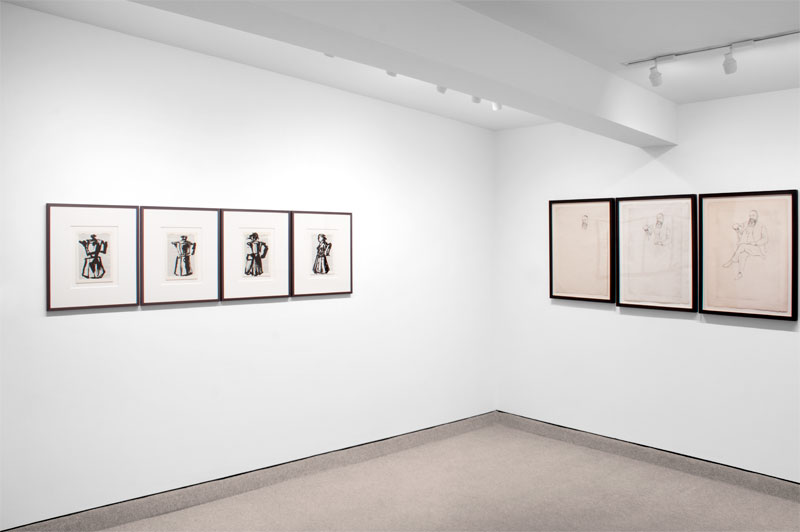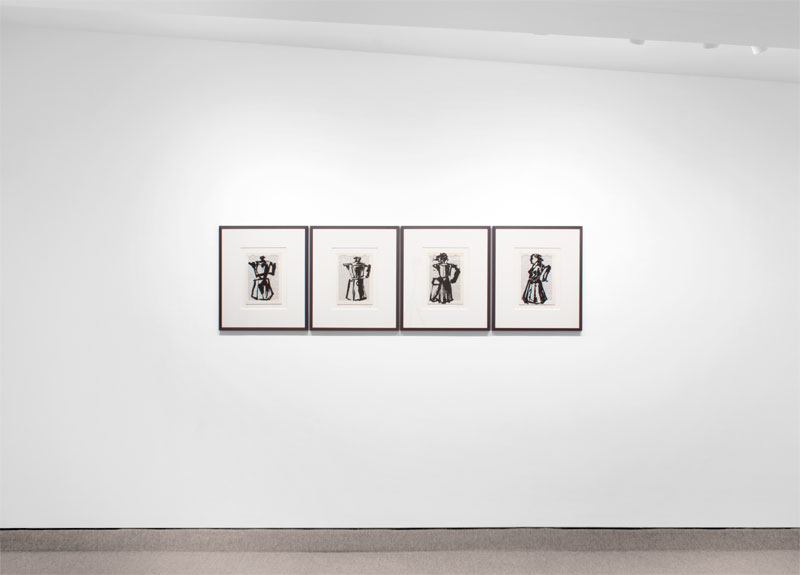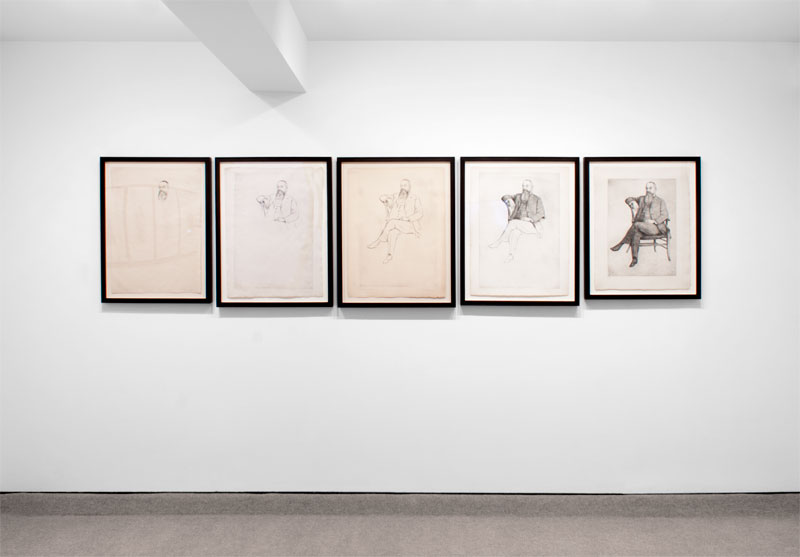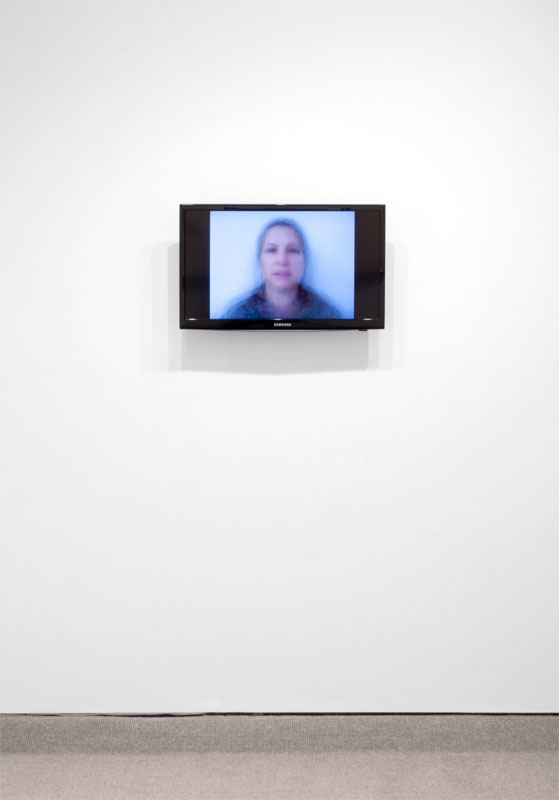
Featuring works by
William Kentridge, Paul Herrmann, and Amy Stacey Curtis
William Kentridge’s “Universal Archive” is made up of individual linocuts printed onto 1950’s dictionary and encyclopedia paper. Kentridge layers familiar objects in uncertain formations onto the pre-printed paper (supposedly certain and immovable terms and definitions of the dictionary and/or encyclopaedia). Kentridge’s images are familiar but semi-abstracted in form resembling a person and a coffee pot simultaneously, with each sheet a different level of legibility. This merging of objects relates to the artist’s skepticism towards certainty in creative processes. Jillian Ross, who has worked with Kentridge since the early 2000s, headed up the printing process for “Universal Archive”, sees the title, “Universal Archive”, as “a reference to his personal ‘universal archive’ as in the themes and images that he repeatedly draws on and animates in his work.”
Paul Herrmann’s “untitled (Seated Man)”, from after 1914, is a work in drypoint and displayed in all five of its states. As opposed to Kentridge, where the work was made in series with the assumption of juxtaposition in presentation, Herrmann’s work was never conceived of as being shown together. Only through a chance archival find, are all five together. Presented in the contemporary context, the works plainly display the movement/time that it took to develop the “final” piece and all the while, display all the technical finesse for which Herrmann was known.
Amy Stacey Curtis’ “visage II” is a work in video where, over the course of a year, Curtis took video of 99 people including herself. She asked each to count from 1 to 100 at the same pace. Curtis gently squeezed each participant’s ankle 100+ times to convey the pace, then merged/super-imposed all 99 video clips to start at the same moment, all saying “one” simultaneously. The final ‘product’ is both warm and haunting, digital and fully humane and organized and chaotic. 100 people, over 100 numbers stay together and depart both aurally and visually. The work shows a community, a unity, one person’s vision and the unknowable results of an experiment all at the same time.
The idea of synchronicity mixed with the opportunity to look at different artists’ goals, approaches and level of control of the work’s presentation are the focus of Interchange. The show includes three different generations of artists, three different ways the works came into the world and three very different subjects that all triangulate in order to further a viewer’s opportunities for aesthetic and conceptual insight.

Edition of 20
Signed ‘WKentridge’ lower right, numbered lower left on each sheet
Image size: 10 3/4 x 7 5/8 inches each (27.3 x 19.4 cm each)
Paper size: 13 13/16 x 10 11/16 inches each (35.1 x 27.1 cm each)
(Inventory #26277)
Edition of 20
Signed ‘WKentridge’ lower right, numbered lower left on each sheet
Image size: 10 3/4 x 7 5/8 inches each (27.3 x 19.4 cm each)
Paper size: 13 13/16 x 10 11/16 inches each (35.1 x 27.1 cm each)
(Inventory #26277)

Approximately 26 x 20 inches each
(size of paper and plate varies through the states as do edition sizes)
(Inventory #28400)
Approximately 26 x 20 inches each
(size of paper and plate varies through the states as do edition sizes)
(Inventory #28400)

Over the course of a year, Curtis took video of 99 people including herself. She asked each to count from 1 to 100 at the same pace. Curtis gently squeezed each participant’s ankle 100+ times to convey the pace, then merged/super-imposed all 99 video clips to start at the same moment, all saying “one” simultaneously.
Duration: 2:44
Edition of 9
Signed and numbered on accompanying certificate
(Inventory #28543)
Over the course of a year, Curtis took video of 99 people including herself. She asked each to count from 1 to 100 at the same pace. Curtis gently squeezed each participant’s ankle 100+ times to convey the pace, then merged/super-imposed all 99 video clips to start at the same moment, all saying “one” simultaneously.
Duration: 2:44
Edition of 9
Signed and numbered on accompanying certificate
(Inventory #28543)
No results found.
10 Newbury Street, Boston, Massachusetts 02116
617-262-4490 | info@krakowwitkingallery.com
The gallery is free and open to the public. Please note our summer schedule:
June
Tuesday – Saturday, 10–5:30
(Open on Juneteenth)
July 1–25
Tuesday – Friday, 10–5:30
(Closed Friday, July 4)
July 29 – September 1
Open via appointment
Beginning September 2
Tuesday – Saturday, 10–5:30